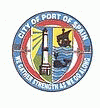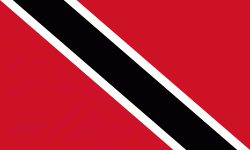Port of Spain (City of Port of Spain)
 |
The city serves primarily as a retail and administrative centre and it has been the capital of the island since 1757. It is also an important financial services centre for the Caribbean and is home to two of the largest banks in the region. The Piarco International Airport is the main airport on the island, connecting the capital to various major global destinations.
Port of Spain was also the de facto capital of the short-lived West Indies Federation, which united the Caribbean.
The city is also home to the largest container port on the island and is one of several shipping hubs of the Caribbean, exporting both agricultural products and manufactured goods. Bauxite from Guyana is trans-shipped via facilities at Chaguaramas, about 5 mi west of the city. The pre-lenten Carnival is the city's main annual cultural festival and tourist attraction.
Today, Port of Spain is a leading city in the Caribbean region. Trinidad and Tobago hosted the Fifth Summit of the Americas in 2009, whose guests included US President Barack Obama and US Secretary of State Hillary Clinton.
Port of Spain is also home to the biggest and most successful stock exchange in the Caribbean, the Trinidad and Tobago Stock Exchange (TTSE). The Nicholas Tower, as well as other skyscrapers, are well known throughout the region. These buildings dominate the city's skyline. Some of the tallest skyscrapers in the Caribbean are located in Port of Spain.
The Port of Spain was founded near the site of the Amerindian fishing village of Cumucurapo ("place of the silk cotton trees"), located in the area today known as Mucurapo, west of the city centre. The name Conquerabia is also recorded for an Amerindian settlement in this area; this may have been a separate village, another name for Cumucurapo, or the result of miscomprehension by early Spanish settlers, who established a port here: Puerto de los Españoles, later Puerto de España. In 1560, a Spanish garrison was posted near the foot of the Laventille Hills, which today form the city's eastern boundary.
The part of today's downtown Port of Spain closest to the sea was once an area of tidal mudflats covered by mangroves. The first Spanish buildings here, in the 16th and 17th centuries, were open mud-plastered ajoupas, interspersed between large silk cotton trees and other trees. The fort was a mud-walled enclosure with a shack inside, a flagpole, two or three cannon, and few Spanish soldiers. This was captured during Walter Raleigh's expedition in April 1595. The Caribs were transient, travelling to the mainland (now Venezuela) and up the Orinoco River. The French naval commander Comte d'Estrées visited in 1680, and reported that there was no Port of Spain. But in 1690, Spanish governor Don Sebastien de Roteta reported in writing to the King of Spain: In 1699, the alcalde of Trinidad reported to the king that the natives "were in the habit of showering scorn and abuse upon the Holy Faith and ridiculed with jests the efforts of the Holy Fathers".
By 1757, the old capital, San José de Oruña (modern Saint Joseph), about 7 mi inland, had fallen into disrepair, and Governor Don Pedro de la Moneda transferred his seat to Port of Spain, which thus became Trinidad's de facto capital. The last Spanish Governor of Trinidad, Don José Maria Chacón, devoted much of his time to developing the new capital. He compelled the island's Cabildo (governing council) to move to Port of Spain, and he limited its powers to the municipality. The 1783 Cedula of Population, which encouraged the settlement of French Catholics in the island, led to a rapid increase in the town's population and its geographical extension westwards. From the small cluster of buildings at the foot of the Laventille Hills, eleven streets were laid out west to the area bounded by the St. Ann's River, thus establishing the grid pattern which has survived in downtown Port of Spain to the present day. Along the sea shore was the Plaza de la Marina (Marine Square), a parade ground. By 1786, the town had a population of about 3,000. Realising that the St. Ann's River, prone to flooding, was impeding the expansion of the town, Chacón had its course diverted in 1787 so that it ran to the east of the city, along the foot of the Laventille Hills. (During the rainy season the river still had a tendency to overflow its banks, flooding parts of the city; over the decades its channel would be widened and paved. During the dry season the water level drops to a trickle; hence its nickname, the East Dry River.) Port of Spain was now able to continue spreading northwards and westwards, encroaching on the surrounding sugar-cane plantations.
In 1797, Trinidad was invaded by a British force under General Sir Ralph Abercromby. The British landed west of Port of Spain, at what is still called Invaders Bay, and marched towards the town. Realising his military resources were inadequate to defend the colony and wishing to avoid unnecessary destruction, Governor Chacón capitulated and was able to negotiate generous terms with Abercromby. Port of Spain remained the capital; the new British colonial government renamed most of the streets after British royalty or military figures, but allowed Chacón Street (which followed the old course of the St. Ann's River) to retain its name, in tribute to the former governor.
Map - Port of Spain (City of Port of Spain)
Map
Country - Trinidad_and_Tobago
 |
 |
| Flag of Trinidad and Tobago | |
The island of Trinidad was inhabited for centuries by Indigenous peoples before becoming a colony in the Spanish Empire, following the arrival of Christopher Columbus, in 1498. Spanish governor José María Chacón surrendered the island to a British fleet under the command of Sir Ralph Abercromby in 1797. Trinidad and Tobago were ceded to Britain in 1802 under the Treaty of Amiens as separate states and unified in 1889. Trinidad and Tobago obtained independence in 1962, becoming a republic in 1976.
Currency / Language
| ISO | Currency | Symbol | Significant figures |
|---|---|---|---|
| TTD | Trinidad and Tobago dollar | $ | 2 |
| ISO | Language |
|---|---|
| ZH | Chinese language |
| EN | English language |
| FR | French language |
| ES | Spanish language |
















